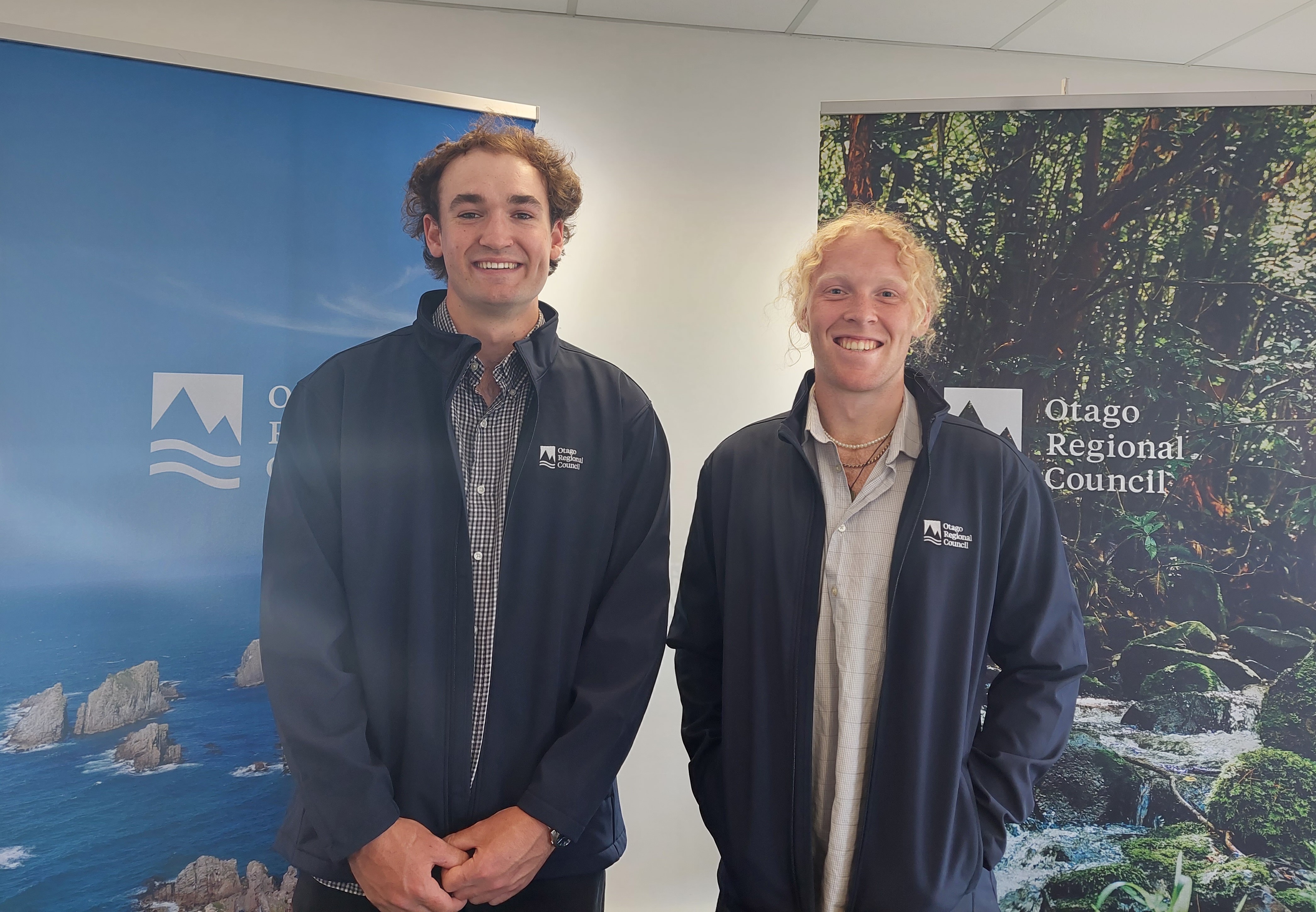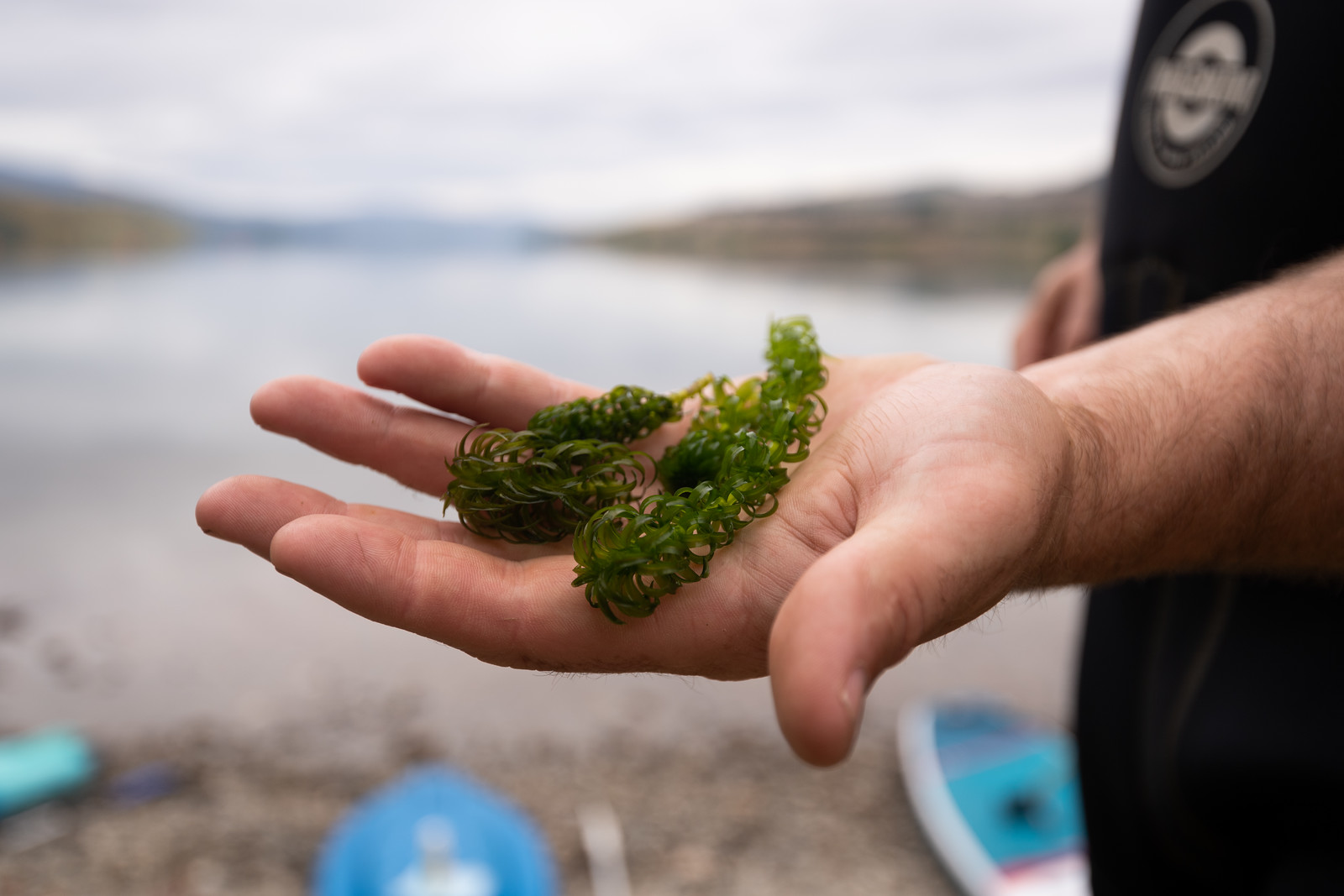“Aquatic pests like didymo and lagarosiphon can spread very easily between waterways on people’s equipment and vessels, but if we can encourage boaties, kayakers, paddle boarders, jet skiers and other visitors to take a few simple steps, it will help to minimise that risk,” ORC Team Leader Environmental Implementation Sarah Irvine says.
From this week through to early February 2024, advocates Ollie Williams-Holloway and Angus Fotheringham, will be based at Lake Dunstan and visiting a variety of spots across Otago’s lakes and rivers talking to people about aquatic pests and the Check, Clean, Dry method.
Earlier this year in May, freshwater gold clams were found along a stretch of the Waikato River. This is a new freshwater pest to New Zealand and is currently only known to be in the North Island. Freshwater gold clams reproduce rapidly and form large populations that can compete with native freshwater species and clog water-based infrastructure such as electric generation plants, irrigation systems, and water treatment plants.
Freshwater gold clams are filter feeders that can accumulate toxins in their gut and therefore should not be eaten.
Ollie and Angus will be making people aware of this new pest threat, the dangers they pose, and how to identify and report them as part of a campaign to keep freshwater gold clams out of Otago.
Ms Irvine says the face-to-face engagement that these advocates carry out is an important part of getting everyone on board with the programme. “With continued efforts like these, we can stop the spread.”

Left to right: Ollie Williams-Holloway and Angus Fotheringham
Ollie is from Wānaka and has been in Dunedin studying environmental management at the University of Otago with a minor in geology. When summer rolls round, he likes to hang up the snow skis and enjoy boating, mountain biking and surfing the Hawea standing wave.
Angus is from Wellington and has just finished a degree in Ecology, also at Otago. Over summer he’s a big fan of being in the water, whether it’s our lakes, rivers, or seas. He’s a keen surfer and fisherman.
“Every year, Check, Clean, Dry advocates are busy at Otago’s lakes and rivers talking to freshwater users, raising awareness of aquatic pests, and educating people on the Check, Clean, Dry method to prevent their spread. The advocates also collect information to help us identify how new pests might get to Otago,” Ms Irvine says.
“Last year the advocates interacted with around 750 water users, with many people already well aware of the Check Clean Dry message. “It’s great to see the community doing their bit to protect our waterways,” she says.
The Check, Clean, Dry advocates will also be at key events throughout Central Otago over summer to demonstrate the important message to help protect our waterways; to always check, clean, then dry any equipment that comes into contact with the water, between every waterway, every time.
Check, Clean, Dry is the Ministry for Primary Industries’ method for preventing the spread of didymo, lagarosiphon, and other aquatic pests.
Check - Remove any plant matter from your gear and leave it at the site (the river or lake bank) or put it in the rubbish. Don't wash plant material down any drain.
Clean - There's more than one option for cleaning your gear – choose the one that's best for your situation and your gear.
Dry - Ensure your gear is completely dry to touch, inside and out, then leave dry for at least another 48 hours before you use it (didymo can survive for months on moist gear).

Lagarosiphon at Lake Dunstan. Photo credit: Clare Toia-Bailey
“The biggest risk to Otago waterways is the further spread of these pests.
“Aquatic pests, specifically lagarosiphon, could squeeze the life out of our country's most precious rivers and lakes and they can be spread by a single drop of water or the smallest plant fragment,” Ms Irvine says.
To find out more about aquatic pests in Otago, you can visit the ORC’s Pest Hub.
